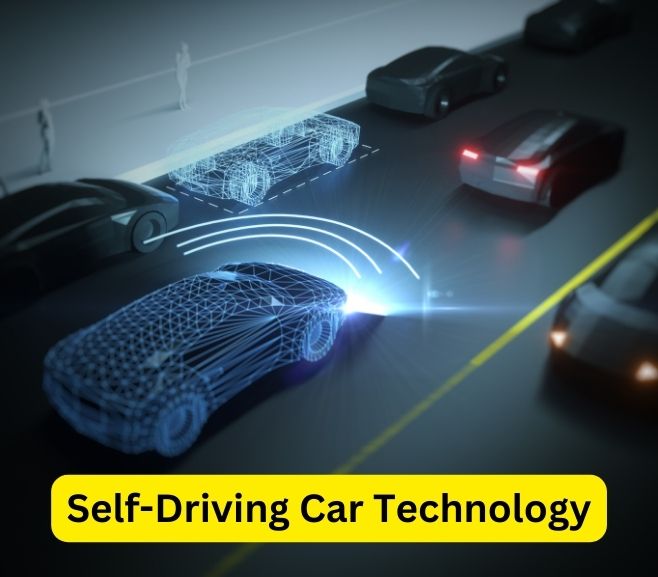Self-driving car technology is a topic that has been gaining popularity over the years. The concept of autonomous vehicles has been in development for a while, but it has only been in recent years that the technology has advanced enough to make it a reality. The future of self-driving car technology is exciting and holds many possibilities. In this article, we will explore the current state of self-driving car technology, the potential benefits and drawbacks, and what the future holds.
How does a self-driving car work?
Self-driving cars use a combination of sensors, cameras, and advanced software to navigate the roads and make driving decisions. The technology behind self-driving cars can be complex, but the basic principles can be broken down into a few key components.
The first component of a self-driving car is the sensors. Self-driving cars typically use a combination of cameras, lidar (laser-based radar), and radar to gather information about the car’s surroundings. These sensors can detect obstacles, other vehicles, and pedestrians, and can help the car navigate the roads.

The second component is the software. Self-driving cars use advanced algorithms and artificial intelligence to analyze the data gathered by the sensors and make driving decisions. This software can interpret the data from the sensors and determine the car’s position on the road, the speed and direction of other vehicles, and potential hazards or obstacles on the road.
Also Read: Android Auto vs Apple CarPlay: Which is better?
The third component is the control system. The control system is responsible for executing the driving decisions made by the software. This system can control the car’s acceleration, braking, and steering, and can make adjustments based on the data gathered by the sensors and the software.
Overall, self-driving cars work by gathering data about the car’s surroundings through sensors, analyzing that data using advanced software, and executing driving decisions through a control system. While the technology behind self-driving cars is complex, it has the potential to greatly improve safety on the roads and revolutionize the way we travel.
Current State of Self-Driving Car Technology
Self-driving car technology is currently in its early stages. There are various levels of automation in vehicles, with Level 0 being completely manual and Level 5 being fully autonomous. Most cars on the road today are Level 0 or Level 1, which means they have minimal automation features. However, some cars have reached Level 2, which includes features such as adaptive cruise control and lane departure warning. Tesla’s Autopilot system is a Level 2 system that allows for partial automation, including steering, acceleration, and braking.
Benefits of Self-Driving Cars
Self-driving cars have the potential to bring many benefits. One of the most significant benefits is increased safety. Autonomous vehicles are not prone to human error, which is a leading cause of accidents on the road. Self-driving cars also have the potential to reduce traffic congestion and improve fuel efficiency. They can communicate with other vehicles and traffic systems to optimize their routes and reduce the amount of time spent on the road.
Another potential benefit of self-driving cars is improved accessibility for those who are unable to drive, such as the elderly or disabled. Self-driving cars can provide a newfound sense of independence and freedom for those who may have previously been reliant on others for transportation.
Drawbacks of Self-Driving Cars
While self-driving cars holds many potential benefits, there are also several drawbacks to consider. One of the most significant concerns is cybersecurity. As self-driving cars become more connected and reliant on technology, they become more susceptible to cyberattacks. There is also the concern of job loss, as self-driving cars could replace jobs in the transportation industry.
Another concern is the lack of human control. While self-driving cars are designed to be safe, accidents can still occur. In the event of an accident, it may be difficult to determine who is at fault, as the car’s actions are determined by algorithms rather than human decision-making.
The Future of Self-Driving Car Technology
The future of self-driving car technology is exciting and holds many possibilities. As technology advances, we can expect to see more Level 2 and Level 3 autonomous vehicles on the road. These vehicles will have more advanced features, such as the ability to change lanes and navigate complex intersections.
In the long term, we can expect to see Level 4 and Level 5 autonomous vehicles become more prevalent. These vehicles will be fully autonomous and capable of navigating any road or traffic condition. We may also see self-driving cars become more integrated with public transportation systems, creating a seamless and efficient transportation network.
Are Self-driving Cars Safe?
Self-driving cars have been a topic of debate when it comes to safety concerns. While the technology has the potential to improve safety on the roads, there are also concerns about its reliability and the possibility of accidents.

One of the key benefits of self-driving cars is that they are designed to eliminate human error, which is responsible for the vast majority of car accidents. With advanced sensors and algorithms, self-driving cars can detect potential hazards on the road and react much faster than a human driver. This can greatly reduce the number of accidents caused by human error, such as distracted driving, speeding, and driving under the influence.
However, there are also concerns about the reliability of self-driving car technology. While the technology has come a long way, it is still in its early stages and is not yet perfect. There have been reports of accidents involving self-driving cars, such as the fatal crash involving a Tesla Model S in 2016. These incidents have raised concerns about the safety of self-driving cars and the need for further testing and development.
Another concern is the possibility of hacking and cybersecurity threats. Self-driving cars rely on complex software and communication systems to function, and any vulnerability in these systems could be exploited by hackers. This could potentially put passengers at risk and create safety hazards on the roads.
While self-driving cars have the potential to improve safety on the roads, there are still concerns about their reliability and the possibility of accidents. It is important to continue to invest in testing and development to ensure that self-driving cars are safe and reliable. Additionally, cybersecurity measures must be put in place to prevent hacking and other threats to the safety of passengers and other drivers on the roads.
Challenges to Overcome
Despite the potential benefits, there are still several challenges that must be overcome before self-driving cars can become a reality. One of the biggest challenges is the regulatory environment. Self-driving cars are subject to numerous regulations at the federal, state, and local levels. Regulations must be developed to ensure the safety of self-driving cars without stifling innovation.
Another challenge is public acceptance. Many people are skeptical of self-driving cars and are hesitant to trust them with their safety. Public education and outreach will be necessary to address these concerns and increase public acceptance of self-driving cars.
Conclusion
Self-driving car technology is rapidly advancing, and the future holds many possibilities. While there are still challenges to overcome, the potential benefits of self-driving cars are too significant to ignore. Increased safety, improved accessibility, and reduced traffic congestion are just a few of the benefits that could be realized with the widespread adoption of self-driving cars.
As technology continues to advance, we can expect to see more autonomous vehicles on the road, with fully autonomous vehicles becoming more prevalent in the long term. However, it is important to address concerns around cybersecurity, job loss, and the lack of human control to ensure that self-driving cars are safe and trustworthy.
In conclusion, the future of self-driving car technology is bright, and it has the potential to revolutionize the way we travel. With continued innovation and collaboration between the public and private sectors, we can work towards a future where self-driving cars are a common sight on our roads.




